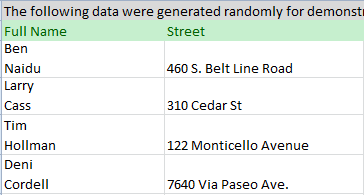

Word For Mac: Click on “Word” in the menu bar and select “Preferences”. Scroll to Display and set “Show Measurements in units of” to millimetres. Word: Click on File, Options, and Advanced. You can stick with centimetres (and convert the measurements) or change Word’s measurements to millimetres. Label measurements tend to use millimetres. Enter your measurements (except number across/down) as a value, followed by a single blank space, followed by the measurement unit symbol.Click on the View Gridlines button on the left hand side. Left click once anywhere in the middle of the page to bring up the Table Tools Layout tab at the top of the page. If you cannot see the table, Table Gridlines are turned off. Its outlines will be shown as dotted grey lines. The table is borderless so it doesn’t get printed along with your designs.They can only represent labels as a grid of rectangles and/or squares they cannot show any shaping, including oval and round labels or rounded corners on rectangle and square labels. Each cell represents a label (or a gap between labels). Word templates represent sheet labels using a table.Template Tuesday Top Tips For Using The Create Labels Tool Step 6: Click on New Document this opens a new document containing your template. Step 5: Click on OK this returns you to Envelopes and Labels. Step 4: Give your template a name, and click OK. Top Margin & Side (Left) Margin – if Word takes issue with the measurements you’ve provided so far, set all the margins to 0mm, enter your other measurements again, and then add in your margins.If there are no gaps enter just the label height or width.
Create text box in word row column plus#

Page Size (& Orientation) – A4 is 210mm by 297mm.Step 3: Enter your required measurements. Step 2: Click on New Label this opens a dialogue box called Label Details. Step 1: Click on Options this opens a dialogue box called Label Options. This opens a dialogue box called Envelopes and Labels.

Click on the Mailings tab and select Labels (on the left hand side). To start the Create Labels tool, open a new blank document in Word.
Create text box in word row column how to#
(Visiting from America? Check out our guide to creating label templates for American label sizes.) How To Create A Label Template In Word Using Create Labels Template Tuesday Presents.how to create label templates in Word using Create Labels & Insert Table tools. Read Add or delete table rows and columns instead of this article.Or copy the link! How To – How To Create Your Own Label Templates In Word If you're using a table, the feature for making columns is different. See How do I give feedback on Microsoft Office? for more information. If this is a feature you’d like to request, please send us your feedback to help us prioritize new features in future updates. You can't insert a column break in a multi-column text box. You can also resize the box that contains the columns to make the columns more even, if you like. You can adjust balance of text in your columns by adding or remove line breaks: Press Enter to add blank lines and move text to the next column, or press Backspace or Delete or remove blank lines and move text to the previous column. If the object you right-clicked in step 1 already contained text, you’ll see that the text now appears in columns. See Add or delete table rows and columns.Īny text you now enter will appear in columns. Columns for tables are described in a separate article. If the Columns button is grayed out, it's likely because you are working on a table. On the right side of the window, click Text Options > Textbox.Ĭlick Columns, enter the number of columns in the Number box, and the space between each column (in inches) in the Spacing box. Right-click the text box, placeholder, or shape border, and click Format Shape.


 0 kommentar(er)
0 kommentar(er)
